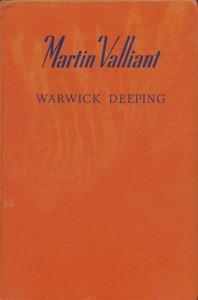|
|
Read this ebook for free! No credit card needed, absolutely nothing to pay.Words: 54693 in 11 pages
This is an ebook sharing website. You can read the uploaded ebooks for free here. No credit cards needed, nothing to pay. If you want to own a digital copy of the ebook, or want to read offline with your favorite ebook-reader, then you can choose to buy and download the ebook.

: We Women and Our Authors by Marholm Laura Ramsden Hermione Charlotte Translator - Women Social and moral questions; Women in literature@FreeBooksThu 08 Jun, 2023 LIBRARIES IN THE MEDIEVAL AND RENAISSANCE PERIODS. J.W. CLARK, M.A., F.S.A. REGISTRARY OF THE UNIVERSITY, AND FORMERLY FELLOW OF TRINITY COLLEGE, CAMBRIDGE. CAMBRIDGE: MACMILLAN AND BOWES. 1894 LIBRARIES. A library may be considered from two very different points of view: as a workshop, or as a Museum. Wherever a fresco peels and drops, Wherever an outline weakens and wanes Till the latest life in the painting stops, Stands One whom each fainter pulse-tick pains: One, wishful each scrap should clutch the brick, Each tinge not wholly escape the plaster, A lion who dies of an ass's kick, The wronged great soul of an ancient Master. I must begin with a few words about Roman libraries, because their methods influenced the Middle Ages, and are, in fact, the precursors of those in fashion in our own times. The Romans preserved their books in two ways: either in a small room or closet, for reading elsewhere; or in a large apartment, fitted up with greater or less splendour, according to the taste or the means of the possessor, in which the books were doubtless studied as in a modern library. An instructive example of the former class was one of the first discoveries at Herculaneum in 1754. It was a very small room, so small in fact that a man who stood with his arms extended in the centre of it could almost touch the walls on either side, yet 1700 rolls were found in it. These were kept in wooden presses which stood against the walls like a modern bookcase. Besides these a rectangular case occupied the central space, with only a narrow passage to the right and left between it and the wall-cases. These cases were about a man's height, and had been numbered. It may be concluded from this that a catalogue of the books had once existed. In larger libraries the books were kept in similar presses, but they were ornamented with the busts or pictures of illustrious men, under each of which was a suitable inscription, usually in verse. The library-era, as we may call it, of the Christian world, began with the publication of the Rule of S. Benedict, early in the sixth century. But, just as that Rule emphasized and arranged on the lines of an ordered system observances which had long been practised by isolated congregations or individuals living in solitude--so the part of it which deals with study was evidently no new thing. S. Benedict did not invent literature or libraries; he only lent the sanction of his name to the study of the one and the formation of the other. That libraries existed before his period is proved by allusions to them in the Fathers and other early writers; but, as those allusions are general, and say nothing from which either their size or their arrangement can be inferred, I shall dismiss them in very few sentences. The earliest is said to have been the collection got together at Jerusalem, by Bishop Alexander, at the beginning of the third century. Another was founded about fifty years later at Caesarea by Origen. This is described as not only extensive, but remarkable for the importance of the manuscripts it contained. Others are recorded at Hippo, at Cirta, at Constantinople, and at Rome, where both S. Peter's and the Lateran had their special collections of books. I suspect that all these libraries were in connexion with churches, possibly actually within their walls. At Cirta, for example, it is recorded that during the persecution of 303-304 the officers "went to the church where the Christians used to assemble, and spoiled it of chalices, lamps, etc., but when they came into the library , the presses there were found empty." This language seems to imply that the sacred vessels and the books were in different parts of the same building. The instructions, again, of the dying Augustine, who bequeathed his library to the church at Hippo, lead to the same conclusion. The library of S. Peter's at Rome, though added to the basilica erected by Constantine, long after its primitive foundation, was on the ground-floor in the angle between the nave and the north limb of the transept, a position which may perhaps have been selected in accordance with early usage. Idleness is the enemy of the soul; hence brethren ought, at certain seasons, to occupy themselves with manual labour, and again, at certain hours, with holy reading.... Between Easter and the calends of October let them apply themselves to reading from the fourth hour till near the sixth hour. After the sixth hour, when they rise from table, let them rest on their beds in complete silence; or, if any one should wish to read to himself, let him do so in such a way as not to disturb any one else.... Free books android app tbrJar TBR JAR Read Free books online gutenberg More posts by @FreeBooks
: Thistledown: A Book of Scotch Humour Character Folk-lore Story & Anecdote by Ford Robert Duncan John Illustrator - Scotland Social life and customs; Scottish wit and humor; National characteristics Scottish@FreeBooksThu 08 Jun, 2023

: Riallaro: The Archipelago of Exiles by Sweven Godfrey - Science fiction; Islands Fiction; Utopias Fiction; Dystopias Fiction; Voyages and travels Fiction; South Pacific Ocean Fiction; Imaginary places Fiction@FreeBooksThu 08 Jun, 2023
|
Terms of Use Stock Market News! © gutenberg.org.in2025 All Rights reserved.






